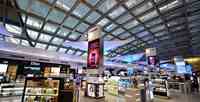
Verona Tourist Attractions
Verona city is one of Italy's most visited holiday destinations, boasting beautiful architecture, stunning scenery and a romantic atmosphere that is hard to find anywhere else in Italian cities.
Once used as the backdrop to one of William Shakespeare's most celebrated plays, Romeo and Juliet, Verona today plays host to thousands of tourists on the romantic trail of these entirely fictional, star-crossed lovers. Among the best loved Verona tourist attractions is the Casa di Guilietta - or Juliet's house - where the famous balcony scene in the play took place. Shakespeare's love story remains an inspiration for young couples to come and visit this 12th century town house that once belonged to the Dal Cappello family.
The originally medieval house still retains its Gothic door and murals, its elaborately decorated balcony on which Shakespeare's Guilietta spent many hours looking out for her Romeo's arrival. A bronze statue in the court yard commemorates her pining for her lover.
Another favourite Verona tourist attraction on the Shakespeare trail is the Basilica die San Zeno Maggiore, where Romeo and Juliet supposedly tied the knot in the crypt. The 11th century basilica features a huge rose window, often referred to as the "wheel of fortune" and the gorgeous Mantegna Triptych, showing the "Madonna and the throne among the Saints". Allegedly, the patron saint of Verona, Saint Zeno, had his ashes preserved in this very basilica.
Perhaps it is safe to say that the number one Verona tourist attraction has to be the Roman amphitheater that has been entertaining visitors with all manner of performances since the 1st century AD, when it was built. Restored to its former glorious size and blessed with world-class acoustics, the Roman theater never fails to impress. Used for operatic performances from the 19th century onwards, the theater can be visited free of charge on the first Sunday of every month.
The splendid Piazza Duomo is home to several impressive monuments, but none more so than the Cathedral of Verona. Among the most popular Verona tourist attractions, the Gothic-Romanesque cathedral is dedicated to Santa Maria Assunta and boasts a library, a bishop's house and a cloister under its massive roof.
Verona's old castle - the 14th century Castelvecchio - was once part of the city's fortifications and served as home to the noble Della Scala family. Also known as Scala Castle, the imposing fortress today serves as an interest city museum.
In contrast to Juliet's house with its famous balcony and charming bronze statue, Romeo's house in the Via Arche could easily be missed by walking past the rather unassuming façade. Located just a short walk from Juliet's house, the medieval Montecchi House once was home to the rich and powerful Montecchi family. Shakespeare's play was based in part on real events.
The two families of the Montecchi and the Cappelletti were engaged in a fierce power struggle in 13th century Verona. The Scala overlords were real people and the events were already mentioned briefly by Dante in his Divine Comedy. Made famous in the 14th century by three different Italian novellas, the story eventually became known in the rest of Europe, where writers like Shakespeare picked it up and had some fun developing it into a play. Several Romeo and Juliet tours are available, taking in the most famous of Shakespeare's locations as well as locations of the real events.
A great place to sit and watch the world go by over a cup of coffee or a glass of wine, the centrally located Piazza delle Erbe was once part of the Roman Forum, which is the source for its rectangular shape. Entirely surrounded by beautiful medieval buildings and towers, the Piazza delle Erbe also boasts a splendid 14th century fountain as its center piece.
Some of the finest views over the city can be enjoyed from the Lamberti Tower, another one of Verona tourist attractions that dates back to 12th century architects. The medieval bell tower looms 84 meters above the city center and can be reached via the Piazza delle Erbe.
Close by is the Palazzo della Ragione, which used to be the City Hall, where the court of Assizes and the Offices of the Magistrates Court were housed. Sandwiched between the Piazza della Erbe, the Piazza dei Signori, Via Dante and Via Cairoli, the Palazzo della Ragione is said to have been constructed either in 1138 or in 1193.
Since a great fire in 1218 destroyed much of the original building, nobody can be sure when the original construction took place - in typical relaxed Italian fashion, not one but two plaques commemorate the possible dates. The Palazzo is one of Verona's most stunning buildings and certainly worthy to rank highly among Verona tourist attractions.

FREE Cancellations, NO card fees!

Value Options View Offers
Useful Information about Verona Airport

Verona Airport Passenger Traffic Up 5.87% in Q3 2023, Not Yet Fully Recovered from Pandemic Impact
View...
See all the airport lounges, locations and opening times available at Verona Airport
View...
See all bars and restaurants at Verona Airport, including locations and if they are before or after check-in
View...
See all shops available at Verona Airport - plan your duty free shopping in advance
View...